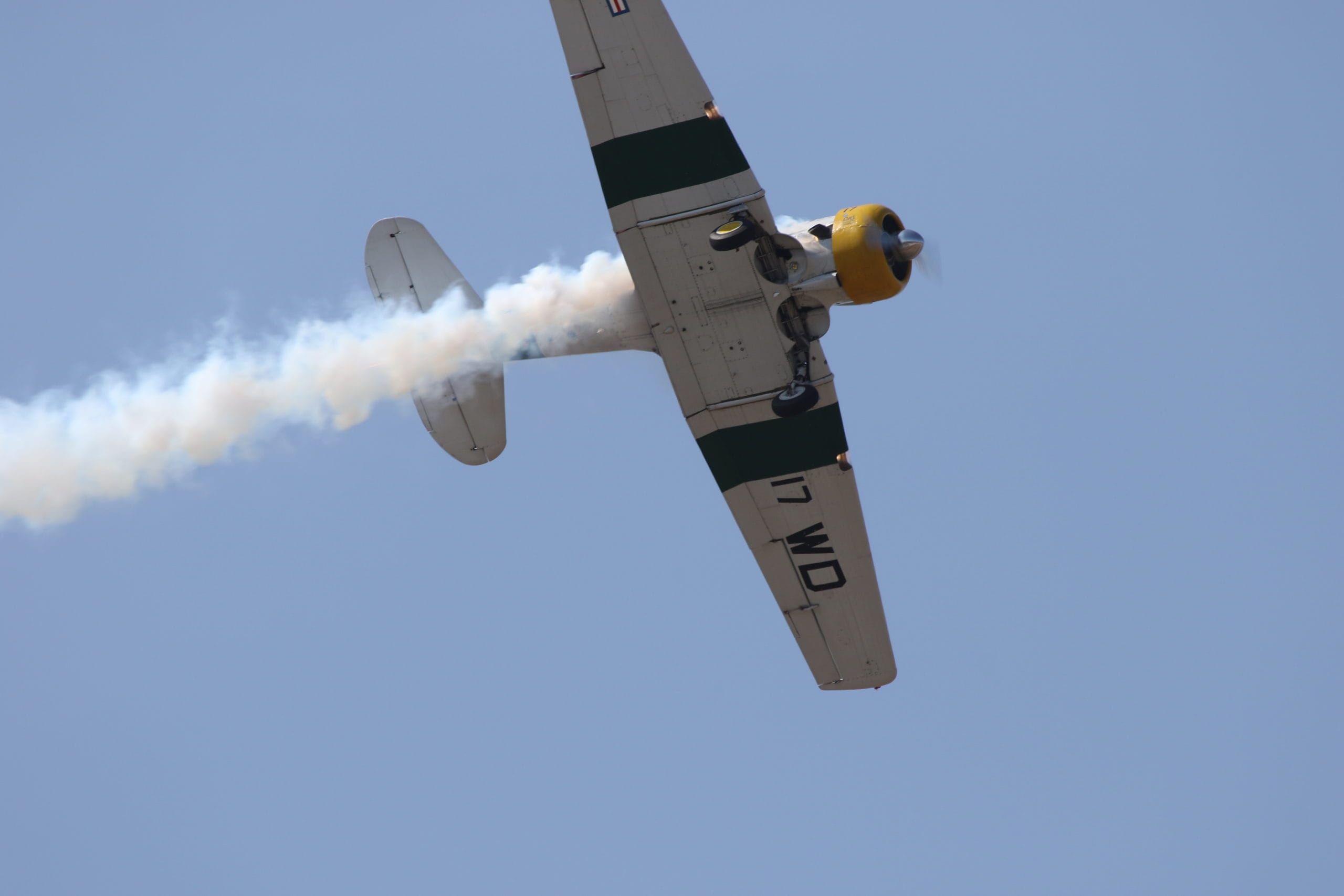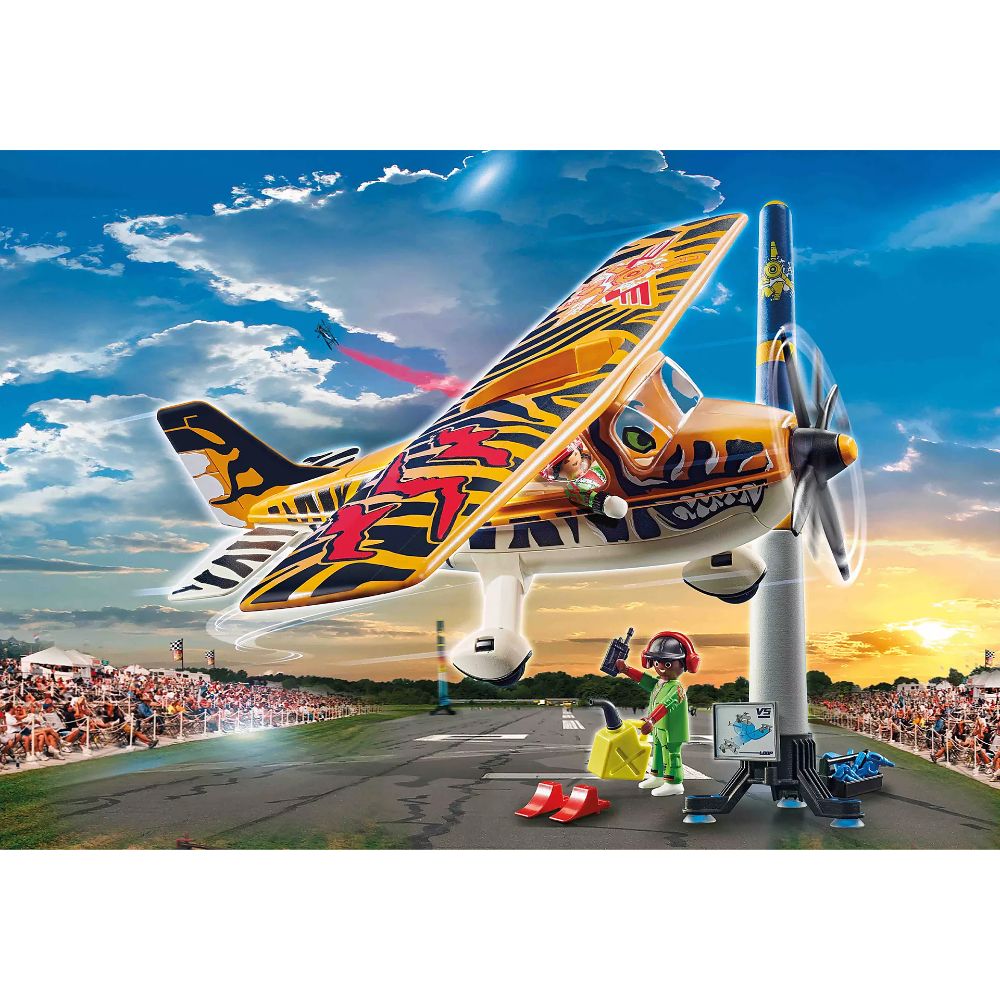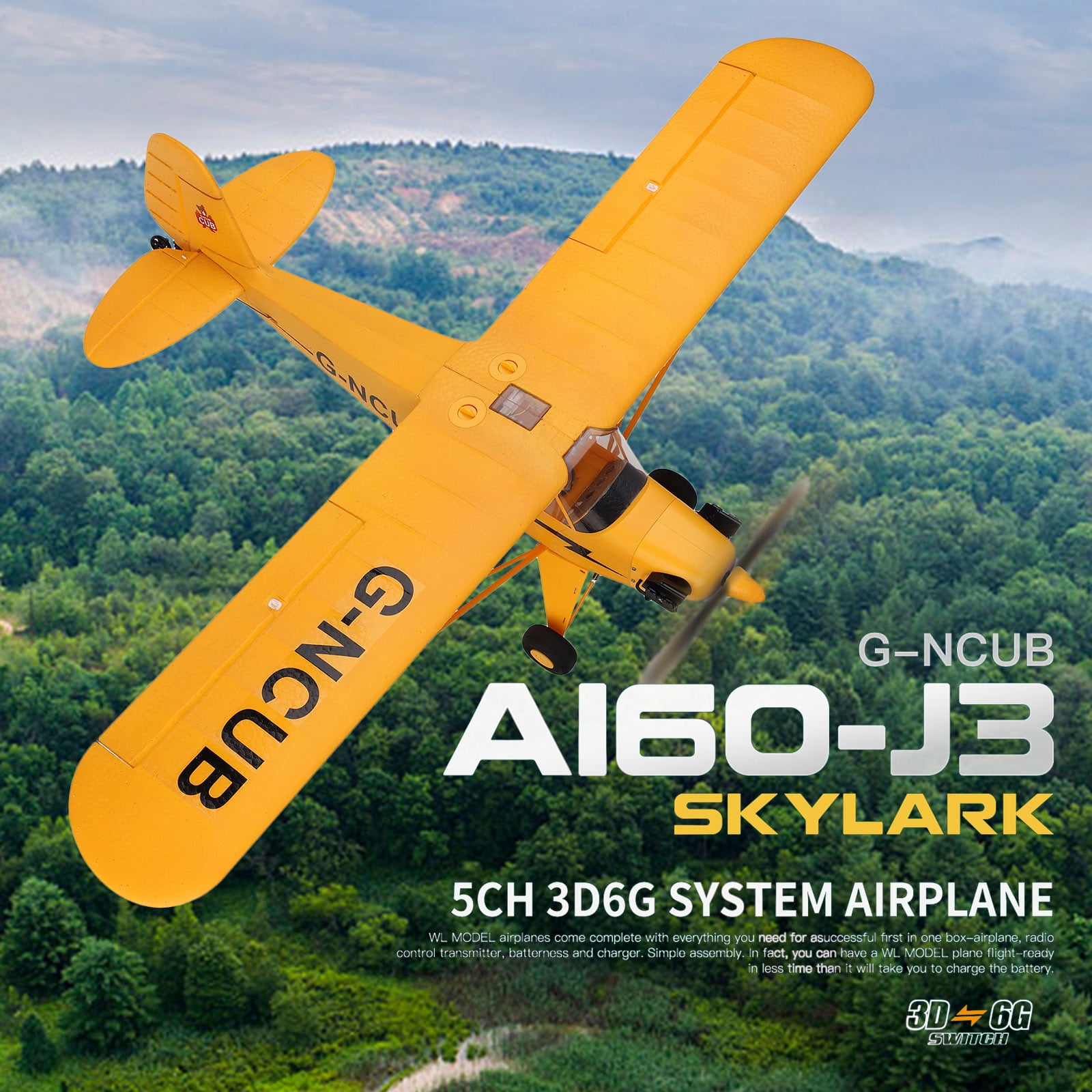Airplane Stunt - This article needs more citations for validation. Please help improve this article by adding citations from reliable sources. Unavailable items can be objected and removed. Find sources: "Aerobatic Maneuver" – News · Newspapers · Books · Scholar · JSTOR (September 2015) (Learn how and what to remove this template message)
The Utterly Butterly display team from the UK make a flying machine with Boeing Stearmans at the starry air show
Airplane Stunt

Acrobatic maneuvers are flight techniques that put the aircraft in an unusual attitude, in air shows, dogfights or aviation competitions. Acrobatics can be performed in a single plane or in formation with several others. Almost all aircraft are capable of some form of navigation, although it may not be legal or safe to do so for a particular aircraft.
Cinemagraph Plane Stunt Gif
A loop is when the pilot pulls the plane straight up, then back in the same direction, as if doing a 360-degree turn, except it's a vertical flight instead of horizontal. The pilot will be turned (face down) at the top of the loop. The loop can also be done with an inverted roll and do the same pattern but dip downwards. It can be visualized forming a loop of ribbon, hence the name it gives (there is an animation showing the loop at the bottom of this page).
Roll simply rotates the aircraft around its axis using the ailerons. It can be done in 360 degree increments (ie four short 90 degree rolls will bring the aircraft back to its position).
The spin is more complex, involving the intentional locking of one wing, causing the aircraft to rotate around its spin axis in a corkscrew motion.
A hammerhead (also known as a stall turn) is performed by pulling the aircraft up until it is vertical (like the start of a loop), but the pilot continues to fly straight until the airspeed drops to a certain critical value. . the point. The pilot uses the rudder to rotate the plane around its axis until it turns 180 degrees and points straight down, in the direction the plane is taking off. The aircraft gains speed and the pilot continues and returns to level flight, moving in the opposite direction from where the maneuver began. It is also known as "tail slip", from the banked turn, which differs from the normal turning of the aircraft on the pitch axis.
Faa Revokes Licenses Of Two Pilots Who Attempted Plane Swap Stunt
Where appropriate, arrest catalog symbols are included. Not all statistics are competitive statistics, so some do not have accompanying graphics.
To read the diagrams, the figure starts with a small solid circle and then ds with a short vertical line. The inverted plane (negative g) is represented by the dashed red lines. The small arrow indicates the roll movement.
It features a high rise, high bank combination to gain maximum advantage in airspeed while making a 180° course change. (Low g maneuvering can be done in all planes.)

5/8s loop to 45 degree row, 1/2 roll, 3/4 loop to 45 degree row, 1/2 roll, 1/8s loop to a level flight (a part of the Cuban Eight is called a "half Cuban eight" and the figure can be flown backwards, known as a "reverse Cuban eight").
Stunt Plane Maneuvers For The First Timers
From level flight, 5/8s loop to inverted 45° line, 1/2 roll to raise 45° line down, pull to level flight.
From level flight pull to 45° up line, 1/2 roll to 45° inverted line up, 5/8 second loop to level flight.
1/4 loop (pull or push) to vertical, as momtum/airspeed decreases, rudder is engaged and aircraft rotates around its spin axis, nose drops to horizon and points down, momtary pauses to pull vertical. on the ground line and 1/4 loop to plane level. This figure is sometimes called the stall turn, which is a misnomer because the plane never stops. Steering is done when the aircraft is descending at 20 - 30 kt (more or less, depending on the speed saved. The cartwheel section of the hammerhead is used with full rudder and full opposite aileron. The gyroscopic forces of the propeller during life speed will produce a pitch increase and roll, and forward stick level will be required to prevent the aircraft from stalling over the apex. The yaw is set against the rudder while the ailerons and elevator remain in place, and when the yaw is set and the aircraft is pointing straight down, all controls return to neutral together. Although they can be flown left or right in any plane properly, the hammerhead flies left with a clockwise rotating propeller and right with a counterclockwise rotating propeller (as in the case of the Yakovlev type), due to propeller torque/gyro effects.
A 1/2 loop up followed by a half roll. There should be no pause between the d of the loop section and the start of the run to take off.
A160 Rc Plane 3 Batteries 5 Channel Brushless Airplane Stunt Flying 3d 6g Mod...
Basically Immelmann in reverse. A half roll (from vertical to reverse) is followed by a positive step to give a half loop. Converts altitude to airspeed and reverses course.
Fly the plane so that the fuselage is facing down (parallel to the zero-lift axis of the wings). The attitude of the aircraft is judged, not the direction of the flight, so the aircraft may drift downward during a vertical stall.
The plane is vertical plus or minus 45°. As for straight lines, the attitude of the aircraft is known, not the path of the aircraft as seen by the observer on the ground, which may differ depending on the number of aircraft in or out of the wind and the strength of the wind.

A broken vertical circle in straight and vertical flight. A positive pitch motion is used at all points of the loop to draw a circle so that the aircraft canopy faces inward. Both the inner and outer loops are sometimes referred to generically as "loop loops".
Full Size Printed Plan To Build A Control Line Stunt Airplane Boomer
A vertical circle cut off in straight and vertical flight with the canopy facing the outside of the loop. The loop can be above or below the vertical and the level of the test height, from the vertical or inverted attitude. (Draw the negative at the extreme)
An outer half loop that starts in a vertical, vertical and horizontal plane. (The pilot pushes the stick forward and draws a half circle in the sky from top to bottom).
A family of self-spins, including normal or "flat" spins, vertical or inverted. There are two components to spinning an airplane: 1) the critical angle of attack (COA), which means the airplane is stationary, and 2) the spin.
1/4 loop up, vertical (full power) until the plane loses its hold. The plane falls backwards, tail first, until the nose descends over the horizon and is vertical to the ground. 1/4 loop (push or pull) to return to flight level.
New V17 Stunt Rc Airplane 2.4g Remote Control Trick Fighter Glider Plane Epp Rc Drone Toys For Children Christmas Gifts
A family of fast autorotations or "horizontal spins", which are not the same as spins. Rotation is caused by a rapid pitch input, followed by a rapid yaw input, thereby positioning one wing above the other. This lift imbalance causes high-speed roll.
Paper airplane stunt plane, stunt king paper airplane, airplane stunt show, best stunt paper airplane, how to make a stunt paper airplane, airplane stunt videos, stunt paper airplane instructions, tom cruise airplane stunt, stunt rc airplane, airplane stunt crash, stunt paper airplane, stunt glider paper airplane